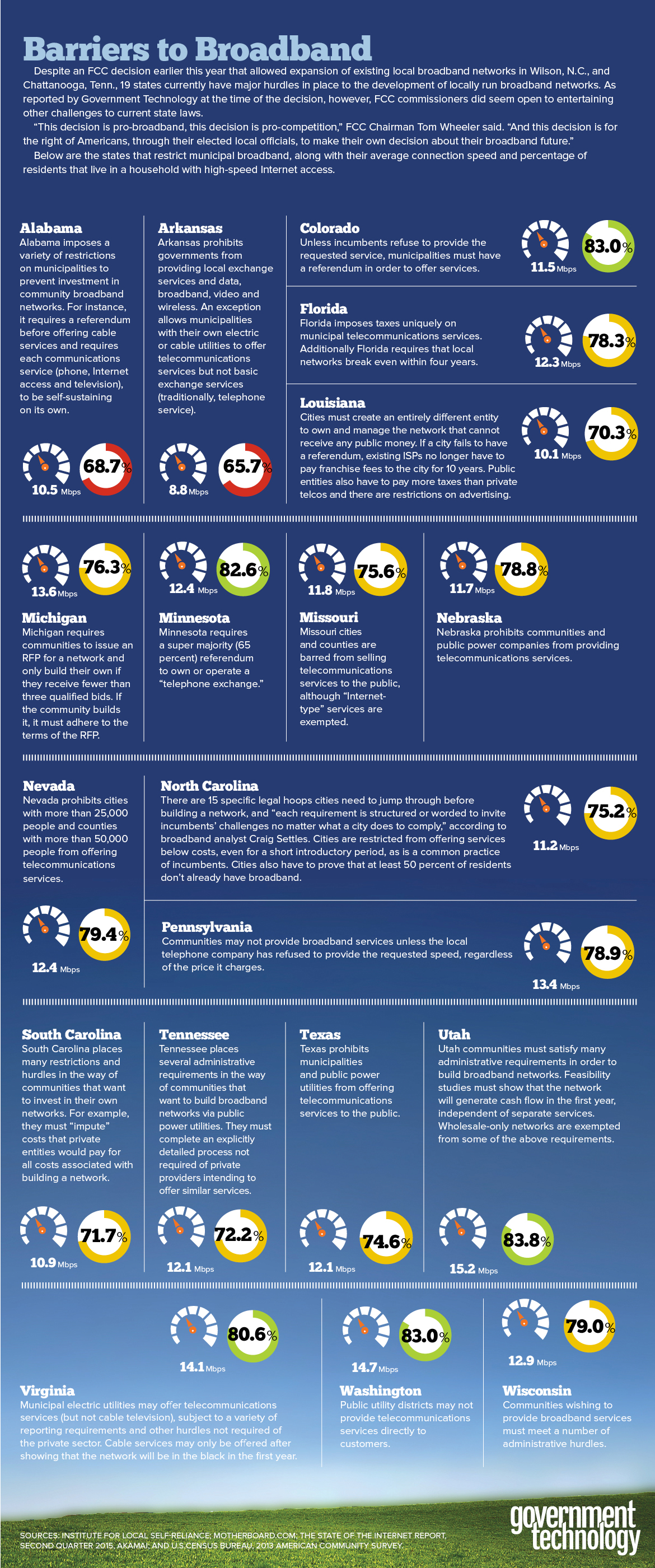This is a great infographic showing the state of broadband services in the United States, but the text in the article is a little misleading. First of all the reason that about half the rural residents can’t get broadband service is because the FCC changed the definition of broadband service and the incumbent carriers are trying to catch up to meet the new definition. Second allowing municipalities to decide their own broadband fate will not address the problem of reaching customers outside the city limits.
The uninformed and big government types look at municipal broadband as the panacea to all our broadband ills, but there is a reason that 19 states have enacted laws preventing municipal governments from getting into this business. They recognize that about half of these ventures fail and leave taxpayers on the hook to cover the losses, and that bureaucracies are generally not market oriented.
Unfortunately many of these laws prevent municipalities from determining their own broadband destiny even if it is to be based on private service providers. Still I see nothing wrong with putting the issue in front of voters or preventing them from becoming a service provider. I do not object for them entering the infrastructure business which many states allow. There are cases when the term “service” must be clarified. Still this is a good infographic to understand the current state of affairs for municipal broadband.
Editor’s note: Recently the FCC estimated that about half of the residents living in rural America can’t get the advanced broadband service that metropolitan areas take for granted. Some rural residents can’t get any Internet connection at all. And even some city dwellers lack access: At Government Technology’s Los Angeles Digital Government Summit in August, CIO Ted Ross said that almost a third of the city does not have broadband Internet access.
But as broadband in the United States inches toward utility status,Government Technology asks representatives from government, industry and nonprofits why the broadband equity gap exists and how to fix it in our five-part series: The Need for Speed.
In the fifth and final installment of our series, we give a quick look at the states that restrict municipal broadband — along with each state’s average connection speed and percentage of citizens that live in a home with high-speed access.








